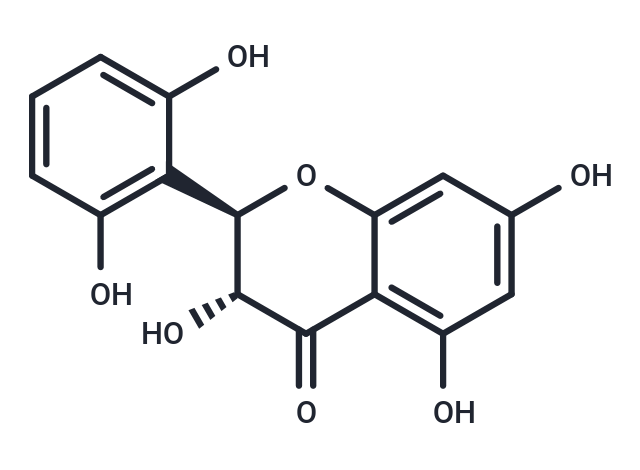Shopping Cart
- Remove All
 Your shopping cart is currently empty
Your shopping cart is currently empty

2',3,5,6',7-Pentahydroxyflavanone (3,5,7,2',6'-Pentahydroxyflavanone) is a natural product isolated from the roots of *Scutellaria baicalensis*.

| Pack Size | Price | Availability | Quantity |
|---|---|---|---|
| 1 mg | $698 | 7-10 days |
| Description | 2',3,5,6',7-Pentahydroxyflavanone (3,5,7,2',6'-Pentahydroxyflavanone) is a natural product isolated from the roots of *Scutellaria baicalensis*. |
| In vitro | 2',3,5,6',7-Pentahydroxyflavanone inhibits the histamine release from rat mast cells[1]. |
| In vivo | 2',3,5,6',7-Pentahydroxyflavanone inhibits the lipid peroxide formation induced by adenosine diphosphate and reduces nicotinamide adenine dinucleotide phosphate in rat liver homogenate[2]. |
| Alias | 3,5,7,2',6'-Pentahydroxyflavanone |
| Molecular Weight | 304.25 |
| Formula | C15H12O7 |
| Cas No. | 80366-15-0 |
| Smiles | O=C1C=2C(O[C@@H]([C@H]1O)C3=C(O)C=CC=C3O)=CC(O)=CC2O |
| Relative Density. | 1.702 g/cm3 (Predicted) |
| Storage | store at low temperature | Powder: -20°C for 3 years | In solvent: -80°C for 1 year | Shipping with blue ice. |

Copyright © 2015-2025 TargetMol Chemicals Inc. All Rights Reserved.